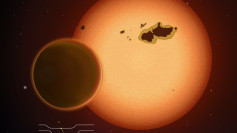The stratospheric ozone hole over Antarctica this year expanded by 3.3 million square miles compared to last year. That's marginally larger than the size of the United States.
Ozone in the stratosphere is a critical planetary sunscreen at 7 to 25 miles above the surface of the Earth, blocking ultraviolet radiation that would otherwise enter the surface of the Earth in quantities that are dangerous to many forms of life, including humans and crops on which we rely.
A treaty restricting the use of human-made chemicals that deplete stratospheric ozone has decreased the magnitude of the hole over the long term. Yet year-to-year changing weather conditions have contributed to major ups and downs.
Though the ozone hole in 2020 was a setback relative to last year, due to the Montreal Protocol, it is smaller than it would have been 20 years earlier. Completed in 1987, the treaty has gradually lowered ozone-depleting pollutants in the atmosphere.
"We have a long way to go, but that improvement made a big difference this year," said Paul A. Newman, of NASA's Goddard Space Flight Center, in an announcement today. "The hole would have been about a million square miles larger if there was still as much chlorine in the stratosphere as there was in 2000."
This year's ozone hole reached about 9.6 million square miles at its peak on Sept. 20. In a 4-mile-high column of the stratosphere over the South Pole, measurements showed the almost complete elimination of ozone.
The ozone hole last year was the smallest on earth, owing to exceptionally high conditions in the stratosphere to a significant degree. Conditions reversed this year, with a prolonged cold that helped spur chemical reactions that contributed to the loss of ozone.
Scientists at NASA and NOAA expect the comparatively large and deep ozone hole to continue into November this year. In the 40 years of satellite records, it has been the 12th-largest ever measured.
Using balloon-borne instruments, scientists have measured ozone levels over Antarctica. This is the 14th biggest ozone hole in the 33-year track record.
Ozone is made of three atoms of oxygen and is extremely reactive to other chemicals. The ozone layer works like sunscreen in the stratosphere, about 7 to 25 miles above the surface of the Earth, protecting the earth from ultraviolet radiation that can cause skin cancer and cataracts, suppressing immune systems, and destroying plants and delicate plankton at the base of the global food chain. By comparison, in the lower atmosphere, ozone, which occurs closer to the Earth's surface by photochemical reactions between the sun and pollutants from vehicle exhaust and other sources, forms unhealthy smog.






